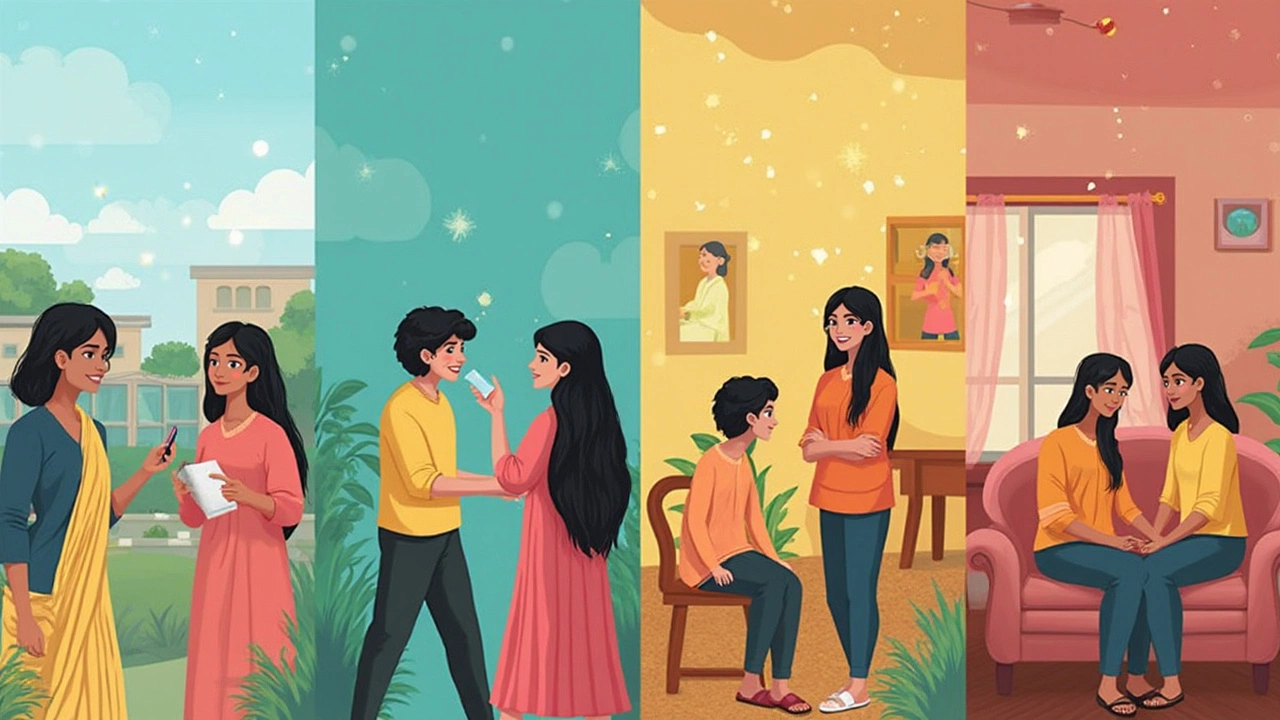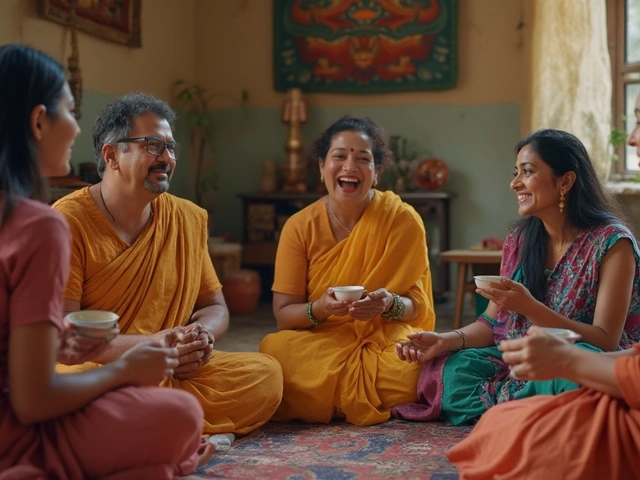You’d be surprised how much difference just having people to talk to makes. Imagine you’ve lost someone close, and nobody in your circle gets what you’re going through. That’s where a local grief support group steps in—it’s not just a room full of sad folks. It’s a bunch of people who suddenly get it, because they’re walking the same bumpy road you are. You don’t need to come with experience or have the right words. You simply show up. There’s no judging, no pressure to “fix” your feelings, and definitely no crocodile-tear performances.
Support groups come in all shapes—there are groups for new parents who feel way out of their depth, cancer survivors figuring out life after treatments, and folks dealing with anxiety who just need someone to listen. Most meet at local churches, hospitals, or even someone’s living room. It’s casual but deeply helpful. People usually share their stories, maybe talk about what’s tough that week, and sometimes there’s a group leader or just someone who makes sure everyone gets a turn.
You don’t have to sign your life away to join. Usually, you just show up and see what it’s like. Some groups even offer snacks—because let’s be honest, sometimes a cup of tea and a cookie go a long way when life feels impossible.
- What Is a Support Group, Really?
- A Real Example: Grief Support in Action
- What to Expect at Your First Meeting
- Unexpected Benefits and Challenges
- How to Find the Right Group for You
What Is a Support Group, Really?
A support group is just a bunch of people who have something in common—usually a struggle or challenge—and they come together to talk, listen, and help each other out. It’s not group therapy with a licensed counselor running the show, but it’s also not just sitting in a circle and complaining. The whole point is to share experiences, learn from others, and remind yourself you’re not as alone as you might think.
Most support groups are centered around specific topics like grief, addiction, mental health, chronic illness, parenting issues, or even the stress of caring for aging parents. Meetings usually happen at community centers, libraries, churches, or sometimes online. There’s almost always a facilitator or volunteer making sure everyone gets a chance to talk.
People join for different reasons. Some need advice for daily life, others just crave some understanding. Here’s what you’ll normally find in a typical local group:
- A welcoming space where it’s OK to vent or get emotional
- Folks who have real-life experience with your situation
- Zero pressure to share if you don’t want to your first time
- Tips, hacks, and local resources that you won’t find in a Google search
To give you an idea of how common these local support groups are, the National Alliance on Mental Illness says one in five U.S. adults struggles with mental health—and thousands of local groups have popped up just to support them. Here’s a quick breakdown of types you’re likely to see:
| Type | What It's For | Common Locations |
|---|---|---|
| Bereavement | Dealing with loss | Hospitals, places of worship |
| Parenting | New parents, special needs | Libraries, community centers |
| Mental Health | Anxiety, depression, bipolar | Nonprofits, online |
| Addiction Recovery | Alcohol, drugs, gambling | Church basements, clinics |
Every group’s vibe is a little different, but the mission is always the same: to share real talk and real support, far from the world of judgment or “just get over it” advice.
A Real Example: Grief Support in Action
People hear "support group" and think of awkward circles, but for a lot of us, support groups are a lifeline during hard times. Take, for example, the local grief support group I joined a few years ago at the community center. It’s not run by therapists or professionals, but by volunteers—people who’ve been through loss themselves.
This group meets every other Thursday in a side room behind the library. There’s always a table set up with tea, tissues, and sometimes a box of donuts. The group keeps things simple. We start with a quick check-in. Everyone shares their name and what brought them in—usually just a few words. Then someone reads a short piece about grief, not from some textbook, but maybe a story or a quote that hit home for one of us during the week.
The heart of it happens when people take turns talking about what they’re facing. There’s no pressure to tell your whole story. Sometimes, just listening in is enough the first time. When I showed up to my first meeting, I mostly kept quiet and just listened to others talk about their ups and downs since their loss. It helped to know I wasn’t alone. Hearing others describe things like struggling to sleep, forgetting to eat, or feeling lost in public places was weirdly comforting. It made what I was feeling seem normal.
Here's what usually happens during each meeting:
- A check-in round—just names, sometimes a few words about your week.
- A reading or a quote gets shared to open things up.
- Open sharing time—no time limit, but everyone gets a turn if they want it.
- People swap tips that actually help, like how to manage anniversaries or handle family questions.
- Plans for the next meeting are made, sometimes with a special focus like holidays or upcoming milestones.
It’s not just for sharing tears—there’s a good bit of laughing, too. And even though nobody is “fixing” anything, just having someone nod, say “me too,” or offer a suggestion feels lighter.
If you’re worried about privacy, most local support groups have a set rule: what’s said in the room, stays in the room. And you can drop in or step back whenever you need. No commitments.
Here’s a bit of perspective from recent numbers:
| Local Support Group Type | Average Attendance (per meeting) |
|---|---|
| Grief Support | 10-15 |
| Cancer Recovery | 8-12 |
| Caregiver Support | 7-10 |
If you’re thinking about joining a group like this, know that you aren’t signing up for therapy. You’re just showing up for honest connection. That’s why support groups work—they give people a safe place to talk, listen, or just be around others who really understand.

What to Expect at Your First Meeting
Walking into a support group can feel like stepping into uncharted territory—but trust me, it’s usually friendlier than you’d expect. Most local support groups don’t need you to prep or say anything special. Some people go just to listen before sharing.
Here’s a breakdown of what usually happens:
- Arrival: Most meetings start right on time but folks trickle in, grab a seat, maybe say hi or just keep to themselves. There’s usually someone to welcome you, especially if you say it’s your first time.
- Introductions: Often, there’s a quick round of names. You never have to share more than your first name or anything that makes you uncomfortable.
- Ground rules: Someone might go over basic rules (no judging, what’s said in group stays in group, and everyone’s story matters).
- Sharing time: This is the heart of it. People talk about their week, their challenges, or just vent. You can join in or pass. Nobody expects you to spill everything the first time.
- Wrap-up and next steps: Meetings usually finish with a small summary, upcoming events, or resources you can take home.
According to the American Psychological Association, "People often feel nervous at their first meeting, but those feelings usually fade quickly as members realize others truly understand what they're going through."
“From my years of attending local support groups, I’ve seen newcomers go from quiet to confident in a matter of weeks. That sense of belonging is powerful.”—Dr. Lisa Webb, licensed clinical psychologist
Don’t expect instant results or a magic fix, but studies show folks who attend support groups are twice as likely to say they feel connected and supported compared to those who go it alone.
| What You Might Feel | What Really Happens |
|---|---|
| Everyone will stare at me | Most people are focused on their own stories and worries |
| I’ll have to talk | You can always pass—listening is fine |
| It’ll be awkward | Maybe at first, but the mood usually loosens up quickly |
Before you head out, one tip: If you feel anxious, it helps to text someone or write down a couple thoughts beforehand. And if you’re stuck, watch how the regulars do it—they were new once, too. Support is what groups are all about.
Unexpected Benefits and Challenges
You might walk into a support group for the company, but walk out with way more than you ever expected. For starters, real friendships often grow out of these meetings. People talk about deep stuff—not the weather or the latest celebrity scandal—so connections get strong fast. According to a 2022 survey by Mental Health America, people involved in local support groups reported a 40% higher sense of belonging compared to those who faced struggles alone.
Another bonus? You pick up coping tips that actually work in the real world, not just ideas out of a textbook. Maybe it’s a breathing exercise someone swears by, or just hearing that someone else survived a rough night. These tips can be life-changing. Sometimes, a member’s words hit just right and help you see your own situation in a new light.
There’s also this ripple effect. When you support someone else—even on your worst day—it boosts your own mood. Science backs that up. Check this out:
| Unexpected Benefit | Members Reporting |
|---|---|
| Stronger Friendships | 65% |
| Practical Coping Skills | 58% |
| Improved Confidence | 41% |
But let’s keep it real—support group meetings aren’t magic cure-alls. Sometimes it’s awkward at first. Opening up in front of strangers takes guts, and some people worry their problems might sound silly. There are times when clashes happen, or someone dominates the talk. It’s normal in pretty much every group, so don’t let it put you off.
Dr. Jenny Wang, a licensed psychologist, says it best:
"Support groups can be uncomfortable at first, but give it time. The community makes sticking with your journey easier and less isolating."
The biggest hurdle? Showing up that first time. Most people feel weird or anxious before their first session. But after a couple of meetings, the awkwardness fades and the benefits start to show. If you decide a particular group isn’t a fit, that’s okay—there are plenty more out there, each with a slightly different vibe.

How to Find the Right Group for You
It’s normal to feel a little lost with so many support group options out there. The trick is to start local and keep it real—pick something that fits your needs, not just what’s most popular. Most people start their search by checking with local hospitals, community centers, or even the public library’s bulletin board. Many local support groups still post paper flyers, especially if they’re for things like anxiety, grief, or parenting. If you’re keen on privacy or convenience, many cities now have Google Maps tags for "support groups near me," which makes finding a meeting location as easy as looking for a coffee shop.
Another tip: big national organizations keep group databases. For example, if you’re looking for help with addiction, Alcoholics Anonymous and Narcotics Anonymous both list local meetings on their websites. For mental health, groups like the National Alliance on Mental Illness (NAMI) offer local chapters you can reach out to by city or zip code. If health issues like cancer are in the mix, hospitals often run their own in-person or virtual groups you might not find through a random search engine sweep. Don’t forget churches and schools—lots of them host everything from grief to parenting groups without making a big fuss about it online.
If you’re nervous about jumping in, here’s a quick step-by-step:
- Figure out what you want to talk about—is it grief, addiction, anxiety, or something else?
- Decide if you want an in-person or virtual group. Plenty meet online now, especially since 2020.
- Search using specific terms—try phrases like "support group for new moms in [your town]" or "anxiety support group near [your zip code]."
- Contact the group leader or organizer (usually their info is listed). Ask basic questions, like how big the group is, what meetings are like, and if it’s beginner friendly.
- Test the waters. Go to one meeting, no strings attached. You’re never forced to stay if it doesn’t feel right.
It’s normal to try a few before you land on the right one. Studies show that people who attend at least two different support group meetings have a much higher chance of finding a good fit and sticking with it. Here’s a quick snapshot of how folks usually find their first group:
| Method | % Who Used It |
|---|---|
| Word of Mouth | 37% |
| Online Search | 29% |
| Healthcare Provider Referral | 19% |
| Community Center/Church | 15% |
If you don’t click with the first support group, don’t sweat it. People move around a little before settling. Someone in my neighborhood tried three cancer survivor groups before finding one where just chatting over pizza felt more helpful than the formal sit-down style others preferred.







